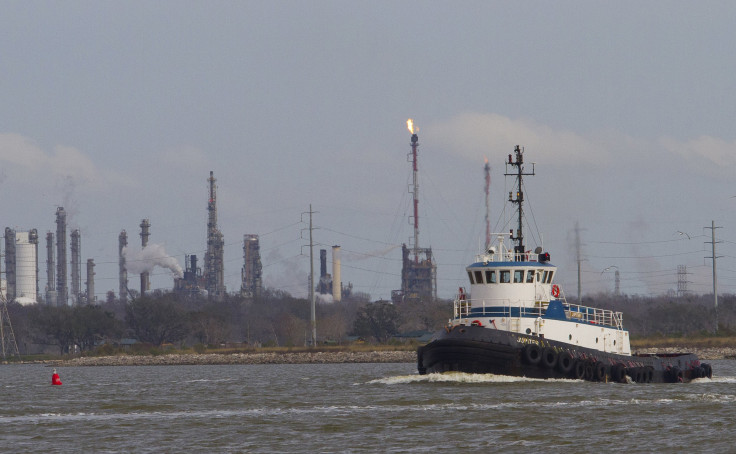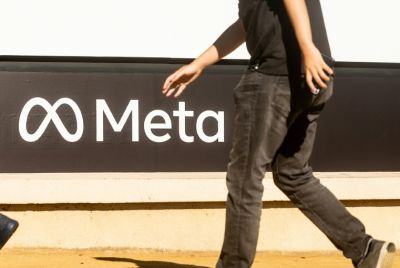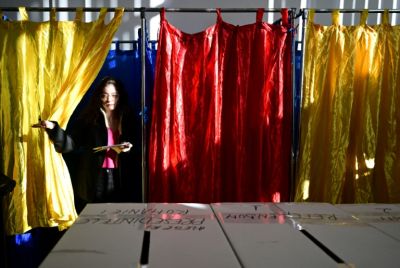EPA Finalizes Rule To Eliminate Air Pollution 'Loophole' For Oil Refineries And Factories

When factories and oil refineries near Houston’s massive seaport start up or shut down, black plumes of smoke and scorching flares burst into the air. Neighboring houses rattle and shake, and pungent fumes waft through the windows, stinging eyes and scratching throats.
“There have been times I get so disoriented, I won’t even drive,” said Suzie Canales of nearby Corpus Christi, home to a 10-mile industrial stretch known as Refinery Row. “I’ve been on the phone when there’s an event going on, and I cannot hear the person on the other line. It’s like being next to an airplane,” she said.
In Texas and other states, refineries, chemical manufacturers and natural gas processers release thousands of tons of toxic pollution each year during startup, shutdown, maintenance breaks and malfunctions. These so-called “upset” emissions are largely exempt from the federal Clean Air Act, which limits hazardous pollution from facilities and vehicles. Thanks to decades-old provisions -- critics call them loopholes -- companies for years have been allowed to sidestep air quality rules during these phases.
That's all about to change. On Friday, the U.S. Environmental Protection Agency finalized a rule to end those provisions and force state regulators to limit industrial upset emissions. The measure comes after years of pressure from environmental groups, led by the Sierra Club, and community activists including Canales, who heads the Citizens for Environmental Justice group in Corpus Christi. States will have 18 months, or until Nov. 22, 2016, to revise their laws in compliance with the EPA rules.
“These loopholes are inconsistent with the Clean Air Act,” said Andrea Issod, a senior staff attorney with the Sierra Club in San Francisco. “There’s no ramifications, and there’s no limits. Oftentimes that pollution will far exceed the amount of pollution they [facilities] pump during the rest of the year.”
In Texas, industrial facilities released nearly 100,000 tons of sulfur dioxide and volatile organic compounds between 2009 and 2011 during malfunctions, startups, shutdowns and maintenance, the Environmental Integrity Project found in a 2012 study. In 2010 alone, pollution during those phases accounted for about 15 percent of all emissions that year, the study said, though researchers pointed out that many of these excess emissions are often underreported and undercounted.
Energy companies and manufacturers say their hands are tied. Pollution control equipment can take hours to warm up, and it occasionally malfunctions. They say the tools simply aren’t available to limit startup and shutdown emissions to the levels required during normal operations.
“You still have to operate with good engineering judgment and within the procedures of the plants. But from a technology standpoint, you can’t do anything else,” said Richard Alonso, a partner at the Washington D.C. law firm Bracewell & Giuliani and the former head of EPA’s air enforcement branch.
Alonso called EPA’s new rule a “paperwork exercise” that will overwhelm state regulators and expose companies to onerous citizen lawsuits.
A spokeswoman for the Texas Commission on Environmental Quality, which regulates air pollution, declined an interview request Friday. She said the agency was still reviewing the EPA’s final rule and wasn’t yet prepared to comment.
The emissions provisions date back to the start of the Clean Air Act in the 1970s. Under the act, each state must draft a “state implementation plan” that explains how local regulators will enforce the federal mandate. In 36 states, including Texas, the state plans include an “affirmative defense” provision, which shields facilities from having to pay penalties if they exceed emissions limits during startup, shutdown, maintenance and malfunction.
In June 2011, the Sierra Club petitioned the EPA, asking federal regulators to require states to revise their implementation plans. Nearly two years later, the EPA proposed a rule to do just that, after deciding the affirmative defense provisions should not be applied to Clean Air Act violations. After a series of hearings and comment periods, the EPA finalized the rule by its Friday deadline.
Industrial companies and state officials are all but certain to challenge the rules in the D.C. Circuit’s Court of Appeals, which reviews decisions and rulemaking of federal agencies. Alonso said he expects some of the energy firms he represents will sue the EPA over the rule.
Even if the rules prevail, it could be years before industrial polluters are required to rein in startup and shutdown emissions, given the sluggish nature of the nation’s regulatory process. “This is just the beginning,” Canales said. “It’s not going to rectify things overnight.”
© Copyright IBTimes 2024. All rights reserved.





















